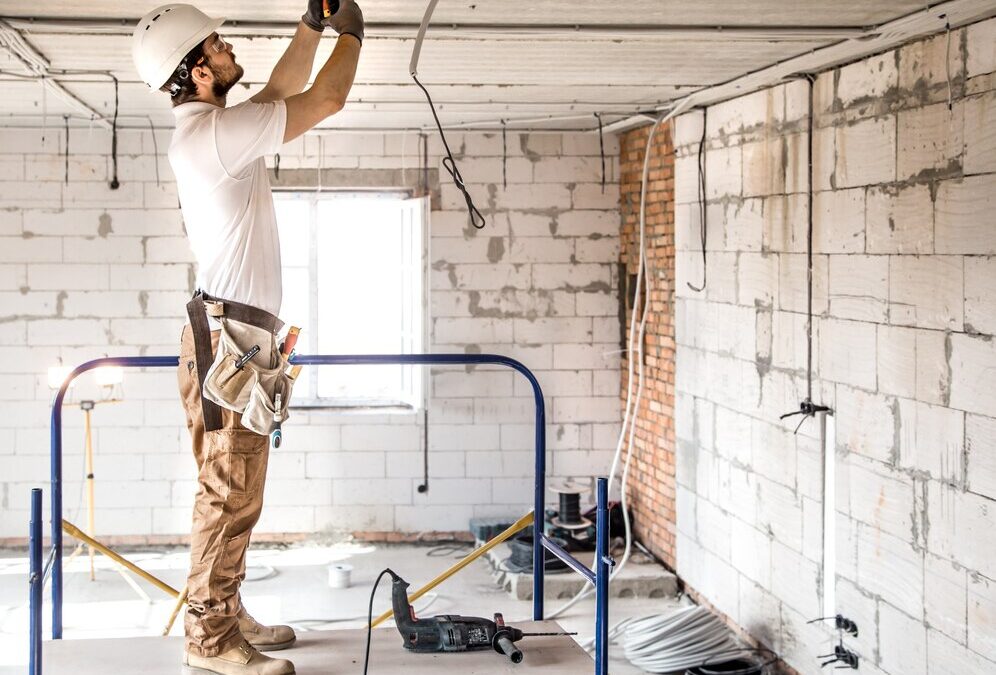Foundations in Texas face unique challenges due to the region’s distinctive soil and weather conditions. Homeowners often find themselves dealing with foundation problems that seem to appear out of nowhere. Let’s explore how Texas soil and weather contribute to foundation instability and what can be done to combat these challenges.
How Texas Soil Affects Foundation Stability
Texas homes often sit on a foundation of expansive clay soil, which poses unique challenges. This type of soil is known for significant expansion and contraction based on its moisture content. When the soil absorbs water, it swells, pushing up against the foundation. Conversely, during dry spells, the soil contracts, leaving gaps and causing the foundation to settle unevenly.
These constant shifts can lead to structural stress and create cracks in the foundation. Over time, this movement weakens the stability of the home, leading to potential safety hazards. There are ways to manage the impact of Texas soil on your foundation:
- Install Water Drainage Systems: Proper drainage prevents water from saturating the soil too much during rains.
- Maintain Consistent Moisture Levels: Use soaker hoses or an irrigation system to keep soil moisture even, especially during dry periods.
- Regular Inspections: Periodically checking for signs of stress or damage can help in addressing issues before they escalate.
Being aware of these factors and taking preventive steps can help maintain a strong and stable foundation, which is essential for your home’s longevity.
Identifying Typical Foundation Problems in Texas Homes
Texas homes often face several foundation problems due to soil and weather conditions. Being able to spot these issues early helps in timely repairs and cost management.
- Cracks in Walls and Floors: One of the most common signs is visible cracks both inside and outside your home. These cracks often appear in the drywall or baseboards and can expand over time.
- Uneven or Sloping Floors: If your floors are not level or have a noticeable slope, this might indicate that the foundation has shifted.
- Doors and Windows Not Aligning: Doors and windows that become hard to open or close are often a telltale sign of foundation movement. Misalignment happens when the frames have been altered due to shifts below.
- Spaces Between Walls and Ceilings: Gaps appearing between walls and ceilings are a red flag that the structure might be settling unevenly.
- Chimney Separation: A chimney pulling away from the home can signal serious foundation issues since it indicates uneven settling.
Recognizing these common problems early allows homeowners to address potential risks before they become severe. Regularly inspecting these aspects and acting promptly can minimize the impact and help maintain structural integrity.
Seasonal Weather Impacts on Foundations
Texas weather can be unpredictable, greatly affecting your home’s foundation. The state experiences both scorching summers and heavy rainfalls, each playing a part in foundation problems.
- Heat and Drought: In the summer, Texas often faces long periods without rain. During droughts, the soil loses moisture and contracts. This shrinkage leads to gaps beneath the foundation, causing parts of the house to settle unevenly.
- Heavy Rainfall: When it rains in Texas, it often pours. Excessive water can make soil expand rapidly. This expansion exerts pressure on the foundation, causing it to crack or heave.
- Temperature Fluctuations: Rapid changes in temperature can also influence soil consistency and movement. This can lead to shifting beneath the foundation, affecting the home’s stability.
Preventive Measures for Foundation Longevity
Taking preventive steps can keep your home’s foundation strong despite Texas’ challenging conditions. Simple routine practices can make a huge difference.
- Maintain Proper Drainage: Ensure water flows away from your home by maintaining gutters and downspouts. This helps prevent water from pooling around the foundation.
- Consistent Watering: During dry spells, use a soaker hose around your foundation to maintain consistent moisture levels in the surrounding soil.
- Regular Inspections: Perform routine checks for signs of foundation stress, like cracks or misaligned doors. Catching issues early helps in managing repairs.
- Root Barriers: If you have trees near your home, consider installing root barriers to stop roots from interfering with the foundation.
- Level Landscaping: Keep the land around your home level. Avoid creating slopes that direct water toward your foundation.
By incorporating these measures into your home-care routine, you can minimize risks to your foundation’s stability. Proactive steps today lead to long-lasting structural integrity and peace of mind tomorrow.
Conclusion
Maintaining a stable foundation in Texas requires a keen understanding of local soil and weather challenges. Recognizing how fluctuating conditions impact your home is crucial for prevention and maintenance. Texas homes face unique threats from both the soil and the skies, making vigilance essential. Homeowners must remain alert to signs of foundation problems and take action when needed.
If you’re facing foundation problems or want to ensure your home’s stability, Lift-Texas Construction is here to help. Our experts specialize in foundation repair services that are specific to Texas conditions. Trust us to protect your investment and keep your home on solid ground. Contact us today to learn more about how we can lift your worries away.

